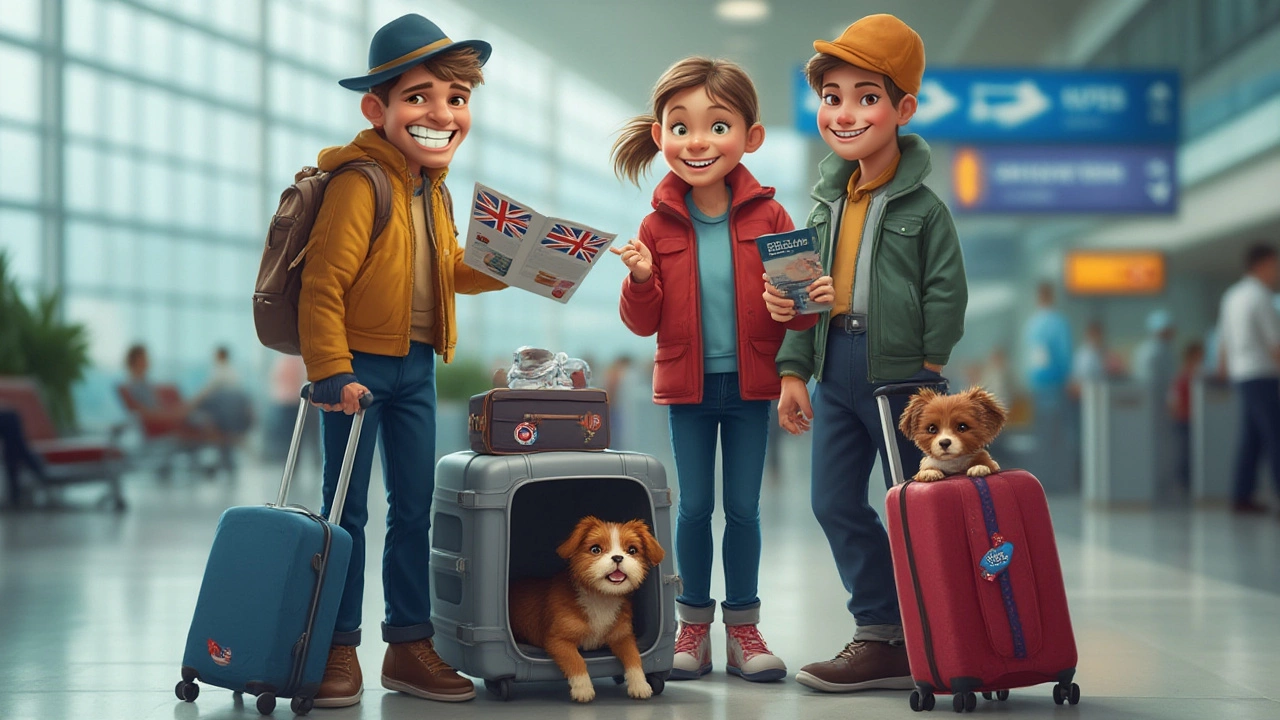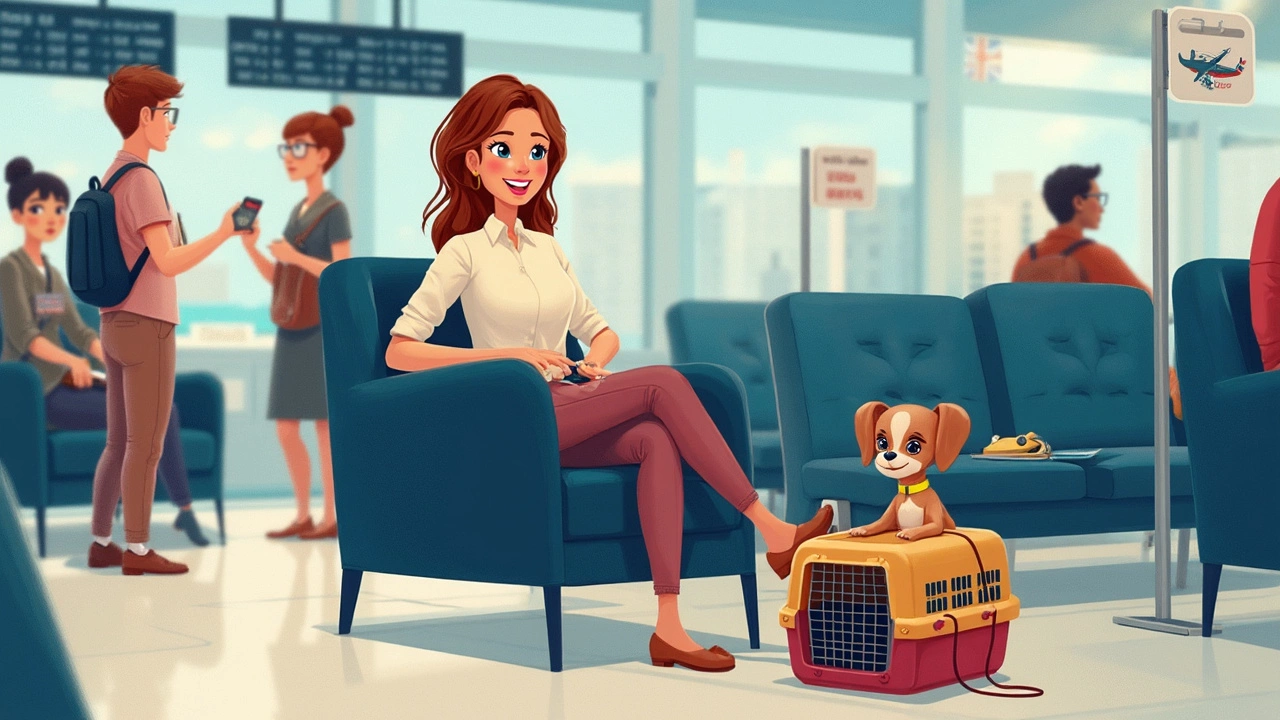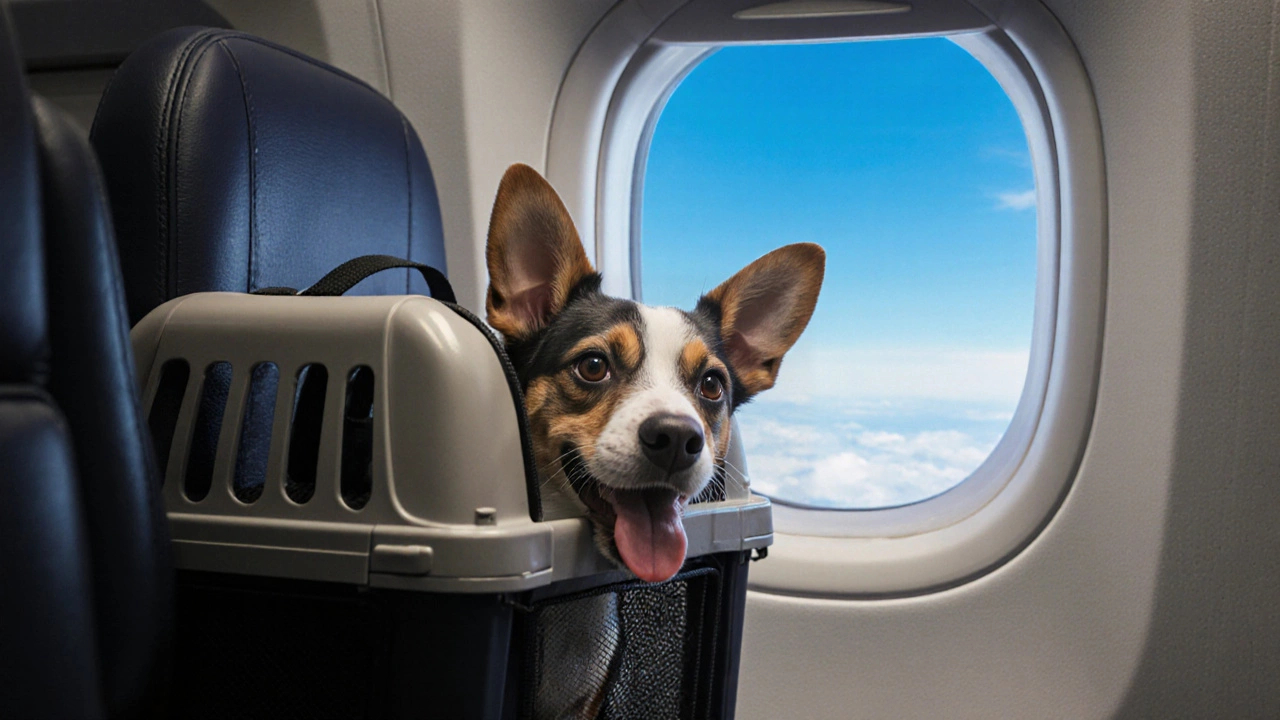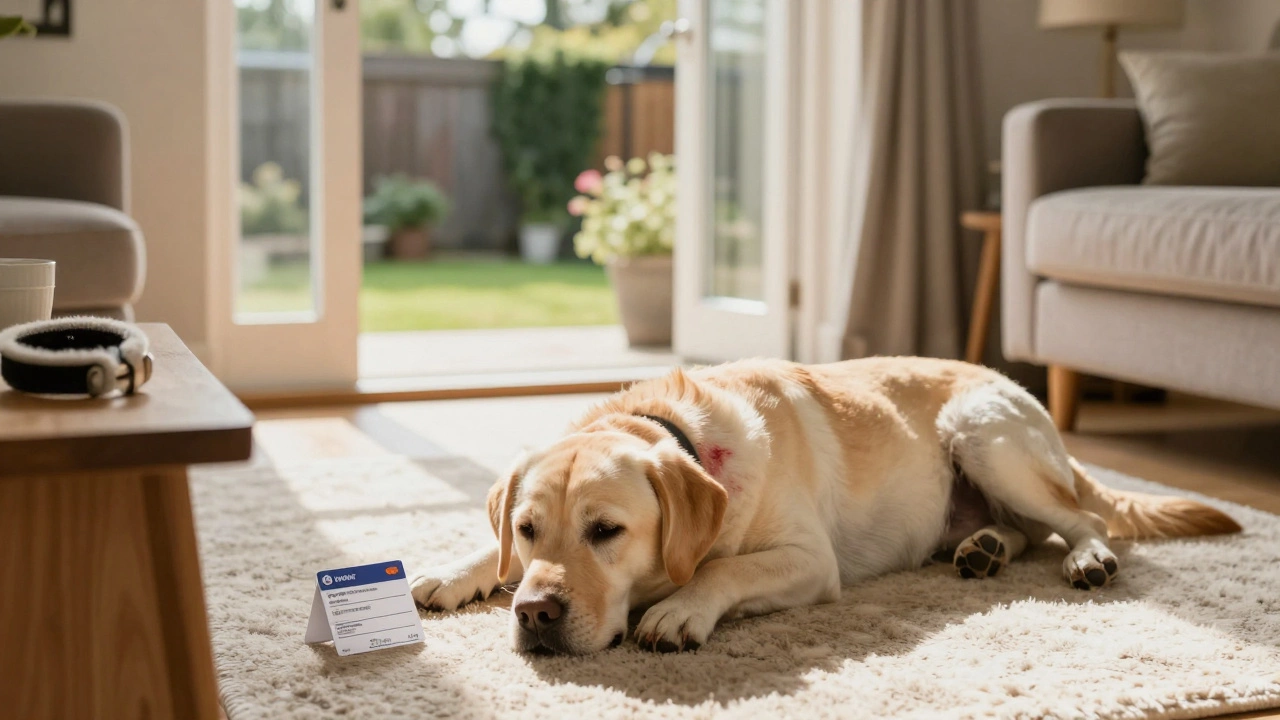Your wallet’s probably going to feel lighter if you want your dog beside you on a plane. Did you know airlines sometimes charge more for your dog’s ticket than your own baggage? It’s easy to get hit with surprise fees, confusing policies, and even breed bans if you’re not careful. So, how much is a dog ticket on a plane? The answer jumps all over the map depending on the airline, the size of your pup, where they’ll ride, and yes—sometimes even the weather. Nobody wants last-minute airport headaches or a freaked-out dog, right? Let’s break down what really goes on when you try to buy a ticket for your four-legged friend.
Breaking Down Airline Dog Ticket Prices: What Sets the Cost?
Ever notice how booking a flight for yourself can feel like playing a game you never practiced for? Now, throw a dog in the mix and there are dozens of rulebooks. The simple answer: dog tickets can range from $95 up to $1000 or even more, one way! Here’s why things get so wild:
- Dog plane ticket prices change based on airline, route, dog size, and whether they fly in the cabin or cargo.
- For small dogs under 20 pounds (that can fit under a seat), in-cabin tickets are typically $95–$200 in the United States. Flying internationally? That can jump to $200–$600 or higher one-way.
- Larger dogs or breeds that must go in cargo or as checked baggage can cost $200–$1000+, especially on international flights. Fancy services like Delta Cargo or United PetSafe usually land near the top.
- Dogs rarely, if ever, get their own seat (unless they’re an emotional support animal under older rules, or a celebrity’s service dog). It’s a fee, not a true "ticket" like a human gets.
- Some airlines won’t let you fly with snub-nosed breeds in cargo at all—not even for $10,000. They worry about safety because these breeds overheat and have trouble breathing.
Fees are basically never included in your main ticket, and you usually pay at check-in. If you’re the type to book ahead, good luck: some airlines cap the number of pets in the cabin, sometimes as low as two!
Airline Pet Policies: The Fine Print (and Unspoken Rules)
Each airline has its own quirk-filled rulebook. On American Airlines, in-cabin dogs set you back $125 per segment, but no pets in international business or first class. JetBlue allows small dogs for $125, but you have to snag a spot online or by phone—their pet program is called "JetPaws." Southwest is more straightforward—$95 each way, but only on domestic flights.
Delta will accept a small dog in-cabin for $95 on U.S. flights, $200 when you’re heading abroad, but forget about Hawaii or Australia—their rules block pets on many international routes. United asks for $125 (except Canada, where it’s $100), but their PetSafe cargo program is much pricier, starting at $250 and climbing with your destination and your dog’s weight.
Now, here’s something that surprises new flyers: most airlines require your dog’s carrier and dog combined to weigh less than 20 pounds for in-cabin. The crate must fit underneath your assigned seat, usually no bigger than 18"x11"x11". If your buddy’s too big, into cargo they go (if the airline even allows it)—and you’ll be shelling out much more.
Don’t expect extras. Ticket prices almost never include food, walks, or even a guarantee that your pet won’t sit on a hot tarmac (it does happen; just ask anyone who’s tried summer travel out of Texas). Some airlines ban pets entirely during temperature extremes or busy holidays.
Pitbull, bulldog, and pug lovers, brace yourself: snub-nosed breeds are banned from cargo on many airlines. Some carriers, like Alaska, make room for bigger dogs or unusual pets, but that flexibility usually means more paperwork and a fatter bill.
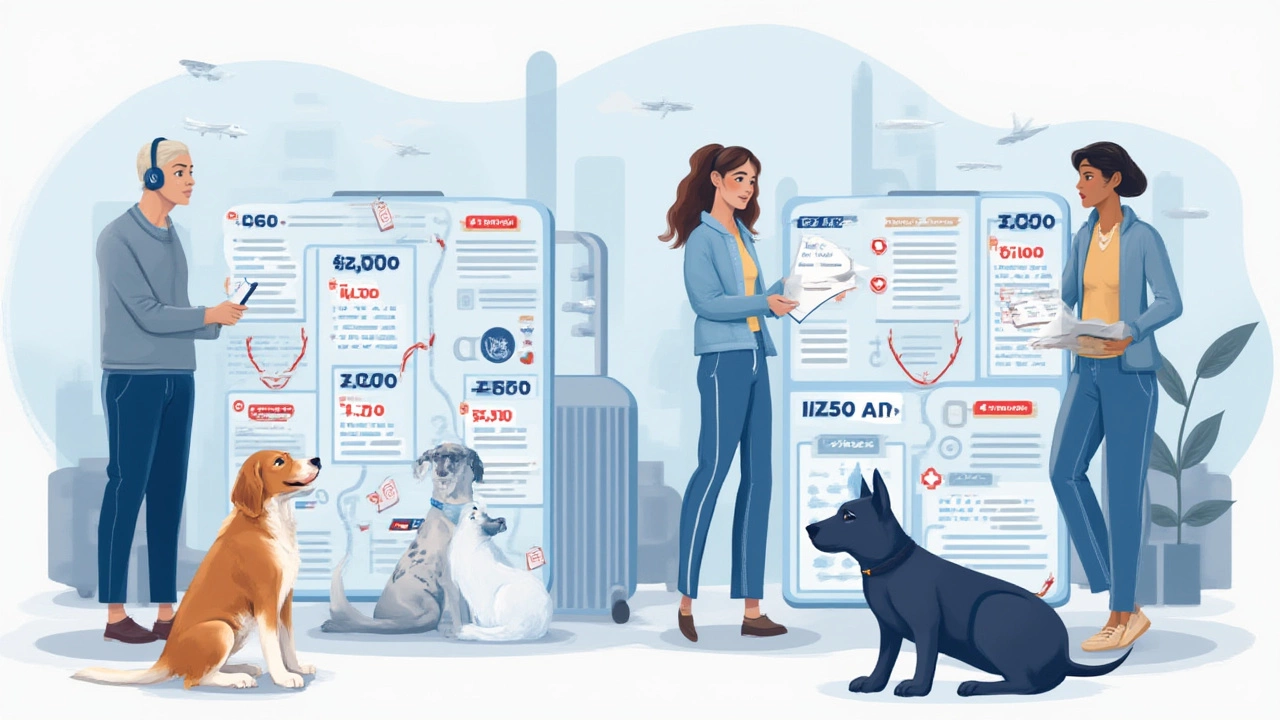
Tips to Save Money and Stress When Booking Your Dog’s Flight
Wish you could skip the complicated stuff and just get your dog from point A to B without emptying your wallet? Few hacks can really cut the price, but you can dodge hidden costs and disasters with the right tricks:
- Compare airline fees side by side before you book your own seat. The cheapest fares sometimes have the steepest pet surcharges or not allow pets at all.
- Book early—really early. Airlines limit the number of pet spots in the cabin, so secure yours as soon as you secure your own seat.
- Weigh your dog and their soft-sided carrier together—then measure the carrier. Confirm the size and weight limits right from each airline’s pet policy page (rules change often!).
- Some airlines, like Southwest and Alaska, are more pet-friendly. If you have flexibility, pick airlines that don’t nickel-and-dime at every step.
- Check if your dog qualifies as a trained service animal. The loophole for "emotional support animals" has closed on most major U.S. carriers as of 2021. Now, service dogs (properly trained) still fly for free, but emotional support pets do not.
- Prepare your paperwork: recent health certificates, vaccinations, rabies proof, and sometimes microchip info are required—especially for cargo or international flights.
- Direct flights make things much safer for your pet (less chance they get lost or overheating during layovers).
- If cost is a barrier, consider pet relocation companies. Their rates sound high, but they take care of paperwork and connections that can be a nightmare solo.
- Look up airline embargo periods (times when pets can’t fly due to heat, holidays, or restrictions) before locking in your travel date.
- Think twice about bargain third-party airline booking sites—they often miss the fine print about pets in tickets, leaving you stranded or out cash at the airport.
Some people find that a road trip, pet-sitting, or leaving their dog at a trusted kennel is safer and cheaper than flying. Dogs, especially older or anxious ones, can get stressed out by flights, so weigh comfort against convenience.
Surprising Fees and Hidden Risks of Flying With Dogs
The sticker price is just the start. On top of the obvious ticket fee, plenty of dog owners get blindsided by last-minute expenses and risks you’d never dream of. For one thing, in-cabin pet fees don’t cover airlines’ pet relief areas, which aren’t available in every terminal. That means a nervous or bathroom-needy pup might make a mess in transit. Some airports have great pet relief stations (like Denver), while others have none at all after you go through security.
If your dog must travel in cargo, most airlines want you to buy or rent an airline-approved crate, which could add $50–$300. International flights need extra paperwork, which runs $50–$150 for USDA health certificates. And if your flight is delayed, or your connection is missed, airlines rarely supply care for your dog—they may just keep them in their crate until you arrive, often without food or water.
Flying with a brachycephalic (snub-nosed) dog doubles the risk: airlines like Delta and United have lost or had medical incidents with these breeds due to breathing issues, so they’ve ended all cargo options for them. If your trip is urgent and you have a pug, flying isn’t just pricey—it could be dangerous or impossible.
Also note, pet policies can change at any time. After high-profile pet deaths or escapes (like the United Airlines French bulldog tragedy in 2018), carriers often rewrite their pages overnight. Always print out the most recent airline rules or take screenshots—just in case a confused airline agent tries to deny you or raise the fee without warning.
If you’re not prepared, you might face rebooking fees, denied boarding for your pet, or even a canceled trip with no refund. And don’t forget: international travel brings quarantine rules in places like the UK, Australia, and Hawaii—where dogs must stay in a government facility for up to 120 days, at your expense.
Most pet-savvy flyers carry pee pads, an extra toy, collapsible water bowl, and maybe a roll of quarters for pet relief areas—you never know what you might need in the terminal or at the gate. Crowd anxiety, barking dogs nearby, or a change of aircraft are just a handful of the curveballs that can turn a pet-friendly trip into a very expensive headache.

